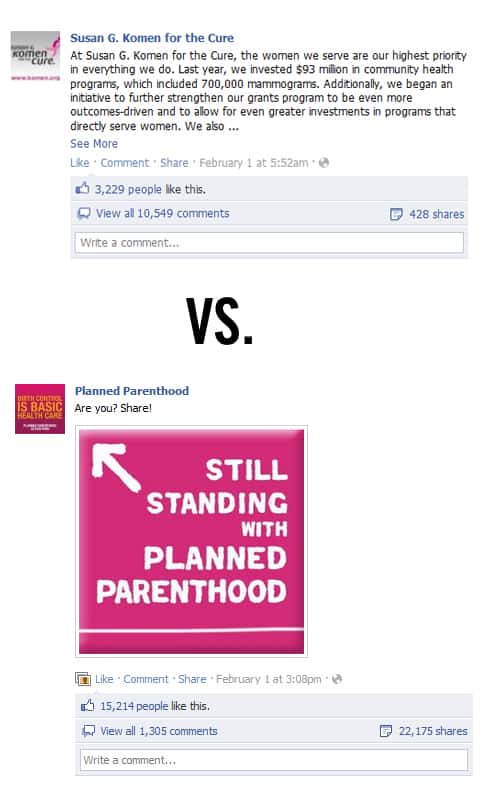The public feud between Susan G. Komen for the Cure and Planned Parenthood is an object lesson in successful strategic thinking. It’s also a sign of what is to come in terms of captivating and motivating an audience.
For those of you who haven’t followed the controversy, Komen recently announced they would (in effect) not provide funding for cancer screenings for Planned Parenthood. Public outrage forced them to reverse this decision – at great, probably permanent expense.
Komen represents a more traditional approach to communications. Though active on social media, their efforts seemed like an anemic translation from old media – abstract, dull, perfunctory. It suggested to me a marginalized intern tasked with completing Facebook posts with no real say in the matter.
Planned Parenthood’s communications were more dynamic, interesting, and timely. They used the immediacy of the Komen decision to lend a sense of urgency to the discussion. This momentum fueled a tidal wave of outrage. It was deftly handled, and Planned Parenthood looked nimble and smart.
Compare and contrast two posts from Komen and Planned Parenthood on February 1.
Brevity is ever the telltale sign of mastery of craft. Though Komen has many more comments, the bulk of them are negative – many even scathing.
There are many great analysis of this incident (this piece by Adovcom is the most interesting and insightful I’ve found) and though they vary in the details, there is a general agreement that the Komen, Planned Parenthood incident is symbolic of a profound shift that is taking place in how organizations think about how they communicate. More than anything else, it’s not a matter of being big, wealthy, or famous, but using the tools you have resourcefully and being imaginative and smart.
